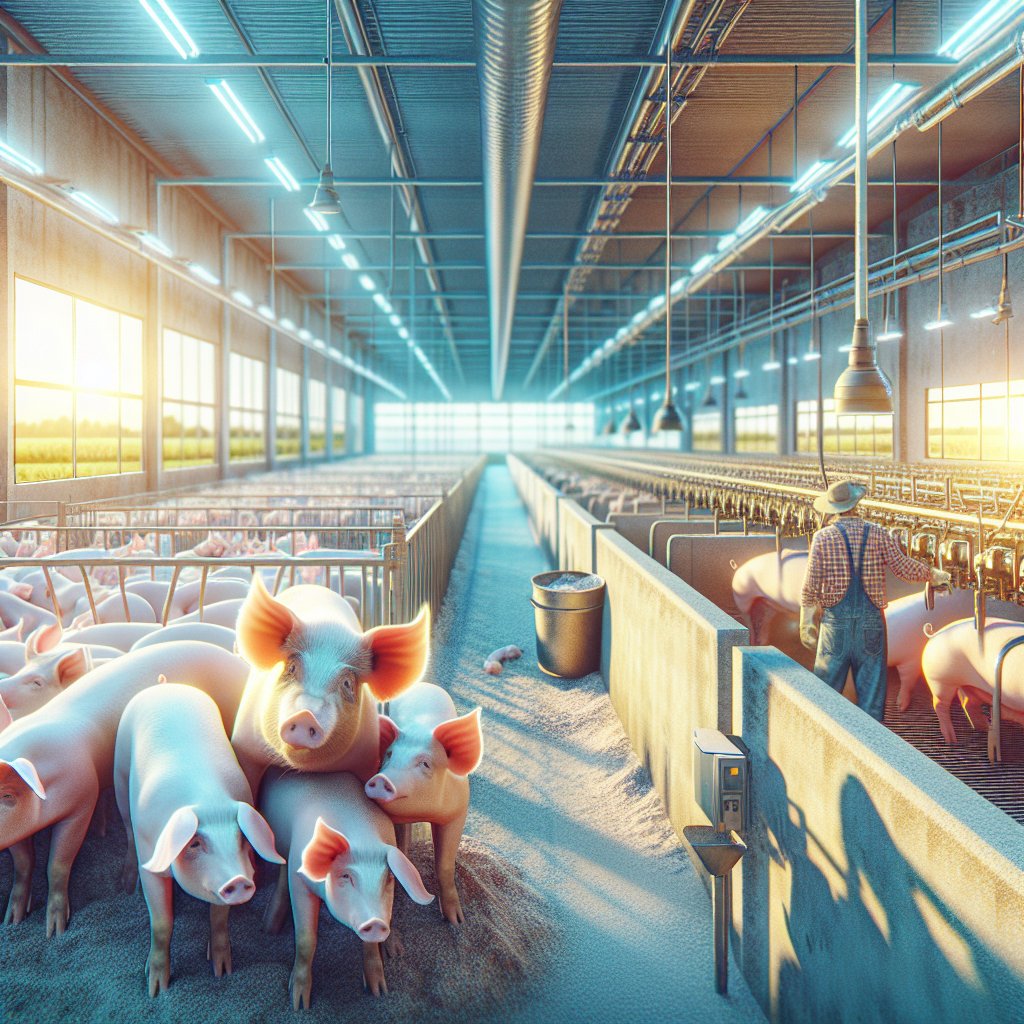
Raising pigs for meat production on a farm is a rewarding yet challenging endeavor that requires careful planning, dedication, and knowledge. This article will guide you through the essential aspects of pig farming, from selecting the right breed to ensuring their health and well-being, ultimately leading to a successful meat production operation.
Choosing the Right Breed
One of the first steps in raising pigs for meat production is selecting the appropriate breed. Different breeds have varying characteristics, growth rates, and meat quality, which can significantly impact your farm’s productivity and profitability. Some popular breeds for meat production include Yorkshire, Duroc, Berkshire, and Hampshire.
Yorkshire: Known for their excellent growth rate and lean meat, Yorkshire pigs are a popular choice among farmers. They are adaptable to various climates and have a good temperament, making them easy to manage.
Duroc: Duroc pigs are renowned for their rapid growth and high-quality meat with good marbling. They are hardy animals that can thrive in different environments, making them a versatile option for meat production.
Berkshire: This breed is famous for its superior meat quality, characterized by tenderness and flavor. Berkshires are often sought after for premium pork products, although they may have a slower growth rate compared to other breeds.
Hampshire: Hampshire pigs are known for their efficient feed conversion and lean meat. They are robust animals that can adapt well to various farming conditions, making them a reliable choice for meat production.
When selecting a breed, consider factors such as your farm’s climate, available resources, and market demand for specific pork qualities. It’s also essential to source pigs from reputable breeders to ensure healthy and genetically sound stock.
Setting Up the Farm
Once you’ve chosen the right breed, the next step is to set up your farm to accommodate the pigs. Proper housing, feeding, and management practices are crucial for the health and productivity of your animals.
Housing
Pigs require well-ventilated, clean, and spacious housing to thrive. The housing should protect them from extreme weather conditions and provide adequate space for movement. Consider the following when setting up pig housing:
- Space: Ensure that each pig has enough space to move around comfortably. Overcrowding can lead to stress and health issues.
- Ventilation: Proper ventilation is essential to prevent respiratory problems and maintain a healthy environment.
- Temperature Control: Pigs are sensitive to temperature extremes, so it’s important to maintain a stable and comfortable temperature within the housing.
- Sanitation: Regular cleaning and waste management are crucial to prevent disease and ensure the well-being of the pigs.
Feeding
Nutrition plays a vital role in the growth and health of pigs. A balanced diet is essential to achieve optimal meat production. Consider the following feeding practices:
- Balanced Diet: Provide a diet that includes the right balance of proteins, carbohydrates, vitamins, and minerals. Commercial pig feeds are available that meet these nutritional requirements.
- Water Supply: Ensure a constant supply of clean and fresh water, as pigs require plenty of water for digestion and overall health.
- Feeding Schedule: Establish a consistent feeding schedule to promote healthy growth and prevent overeating or underfeeding.
Health and Welfare
Maintaining the health and welfare of your pigs is crucial for successful meat production. Regular health checks, vaccinations, and proper management practices can prevent diseases and ensure the well-being of your animals.
Health Management
Implement a health management plan that includes regular veterinary check-ups, vaccinations, and parasite control. Monitor your pigs for signs of illness, such as changes in behavior, appetite, or appearance, and address any health issues promptly.
Welfare Practices
Ensuring the welfare of your pigs involves providing a comfortable and stress-free environment. Consider the following welfare practices:
- Enrichment: Provide enrichment activities, such as toys or rooting materials, to stimulate the pigs and prevent boredom.
- Social Interaction: Pigs are social animals, so allow them to interact with each other to promote natural behaviors and reduce stress.
- Handling: Handle pigs gently and calmly to minimize stress and prevent injuries.
Marketing and Selling Pork
Once your pigs have reached the desired weight and quality, it’s time to market and sell your pork products. Understanding the market demand and establishing a reliable customer base are key to maximizing your profits.
Market Research
Conduct market research to identify potential buyers and understand the demand for different pork products. Consider factors such as local consumer preferences, pricing trends, and competition in your area.
Sales Channels
Explore various sales channels to reach your target customers. These may include:
- Direct Sales: Sell directly to consumers through farmers’ markets, farm shops, or online platforms.
- Wholesale: Supply pork to local restaurants, butcher shops, or grocery stores.
- Value-Added Products: Consider producing value-added products, such as sausages or smoked meats, to diversify your offerings and increase profitability.
Building a strong brand and maintaining high-quality standards are essential for establishing a loyal customer base and ensuring the success of your meat production operation.
Conclusion
Raising pigs for meat production on a farm requires careful planning, dedication, and attention to detail. By selecting the right breed, setting up a suitable farm environment, ensuring the health and welfare of your pigs, and effectively marketing your products, you can achieve a successful and profitable pig farming operation. With the right knowledge and practices, pig farming can be a rewarding venture that contributes to the agricultural industry and provides high-quality pork products to consumers.

